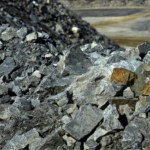
Policy analyst Bright Simons has challenged the Ministry of Lands and Natural Resources’ claim that lithium prices have collapsed from over US$3,000 per tonne to just above US$630, a figure cited by the mines minister to justify reducing Ghana’s royalty rate on the country’s first lithium mine.
In a post on X (formerly Twitter), Simons questioned why the government was proposing to slash the royalty rate from 10 % to 5 % on the Atlantic Lithium‑backed Ewoyaa lithium project when publicly tracked lithium benchmarks showed prices rising rather than falling.
1. Ghana’s Mines Minister says lithium prices have fallen from over $3000 since the country’s first lithium mine agreement was signed with Atlantic, a Sydney-based miner, to just over $630 today.
2. Because of that, the 10% royalty stake many Ghanaians were unhappy with would… pic.twitter.com/1WM1VA3U1V
— Bright Simons (@BBSimons) November 12, 2025
He wrote:
“When the Agreement went to Parliament in August 2024… the price of lithium was ~$780… today … the price of lithium was around $990.”
The original mining lease, signed in October 2023, was based on a benchmark price of “spodumene 6 % Li₂O, CIF China” at roughly US $2 200 per tonne, and projected a payback period of 19 months, gross margins of 62‑76 % and net margin of 35 %. Simons argues that even at current prices, by Simons’ calculations the mine still earns about 30 % gross profit per ton — making the government’s royalty cut puzzling.
The government has forwarded a revised lease to Parliament for ratification reflecting the royalty reduction, with the minister citing alleged profitability concerns from Atlantic.
However, no updated profitability analysis or definitive feasibility study has been published to substantiate the minister’s figures — a transparency concern flagged by civil‑society organisations such as IMANI Africa.




